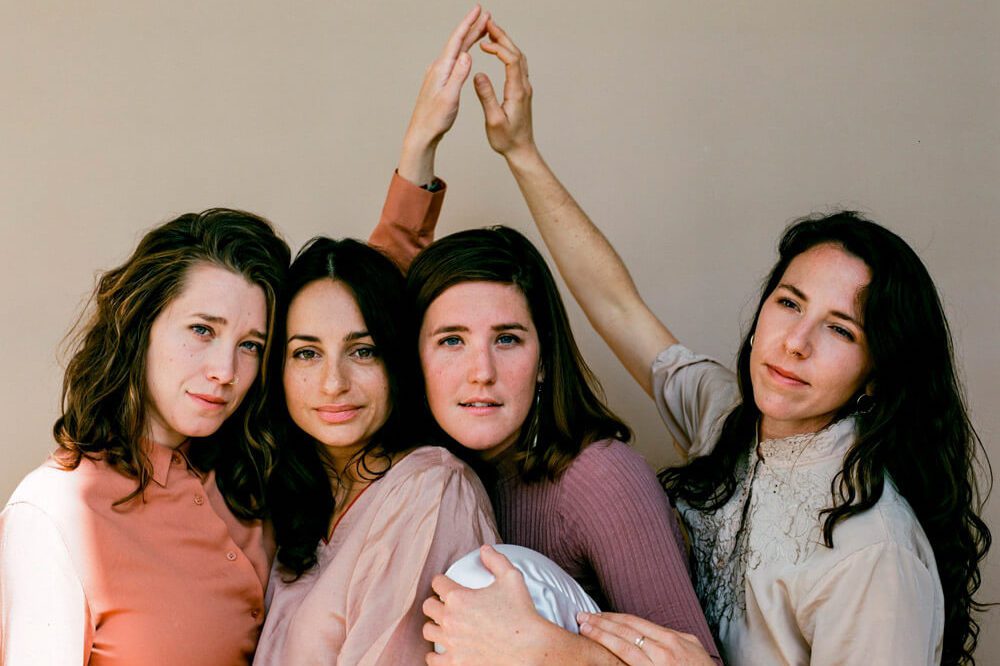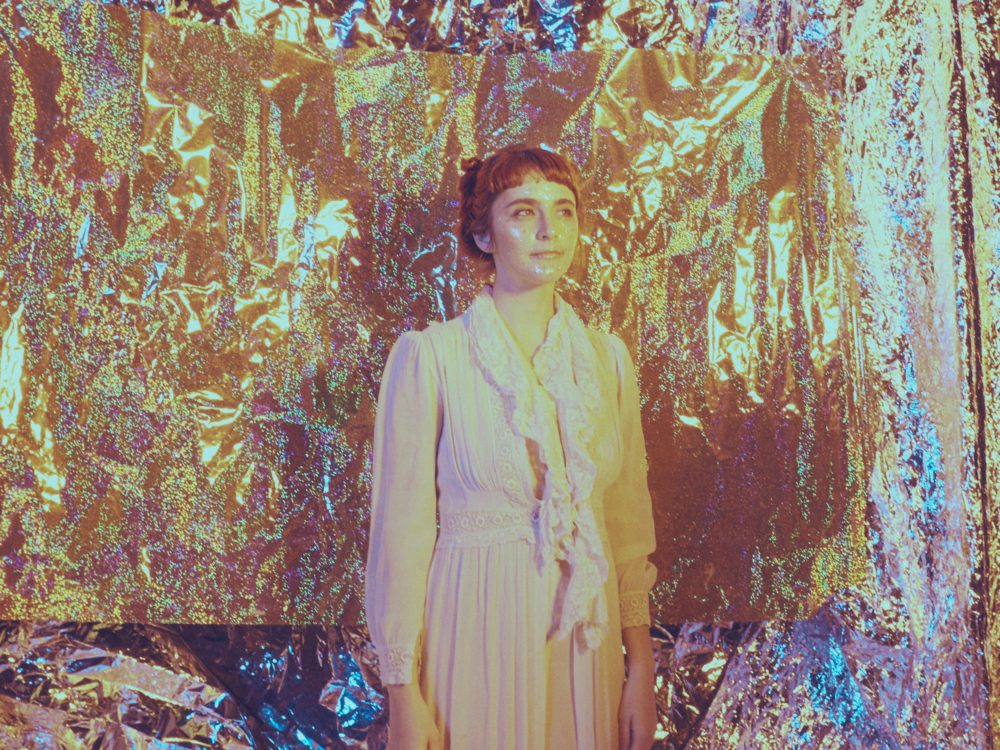

All-female, multilingual folk fusion band Ley Line is based in Austin, Texas, but the quartet formed in Brazil, where founding members Kate Robberson and Emilie Basez first met and began playing shows together in 2012. Five years later, after twins Maddy and Lydia Froncek joined the band and they’d released their 2016 debut Field Notes, they returned to their origins, embarking on a four-month van tour through Brazil.
Their latest album, We Saw Blue, is an amalgamation of Brazilian songs they learned on the trip, songs they wrote on the road, and songs inspired by the people and places they encountered there. Listeners are able to experience the tour vicariously through the LP, from the rich pieces of Brazilian culture the band picked up to the adventures they experienced there.
“All the songs were kind of anthems of that time, because it’s the songs we connected to while traveling and when we came back and were processing it,” says Maddy Froncek.
Since none of the band members are Brazilian themselves (Basez is of Argentinian descent, and Robberson is married to a Brazilian), they wanted to become better acquainted with the culture that was already influencing their music and pay homage to it. This was behind the decision to include covers of Brazilian folk songs, which they put their own spin on.
“Ciranda,” for instance, was written 50 years ago by a man named Capiba, telling the story of someone who spots a fish and thinks they’re seeing the goddess of the ocean dancing on the water. Maddy Froncek added English lyrics that retell the story in a mesmerizing melody: “The moon she calls to her daughters/come swim in my waters, and I’ll take you home.”
Water is an overarching image that ties the album together. “Oxum,” full of infectious drums and energetic Portuguese chanting, was inspired by a poem about the Afro-Brazilian deity of fresh water that a woman in Brazil read to the band members. “The Well,” which sounds almost like an old American hymn, describes emptying oneself like a well to make room for something new to pour in.
For Ley Line, water serves as a symbol of humanity and how people are like many drops in the same ocean. “We decide what we focus our attention on. Seeing what connects us moves us forward together. Like water moving to the ocean, we’ll be guided on our journey,” Robberson explains. “It’s an idea of always looking for what connects us and finding a lot of peace in that.”
The title We Saw Blue is a nod to this theme, though its origins are multifold: it was inspired by a host the group had early on their trip who assured them that they would be protected by a “manta azul” — “blue blanket” in Portuguese — over the course of their travels. It also stems from a line in a poem Robberson wrote years ago, which is on the CD’s inside cover.
Other songs on the album recount the trip itself. The simple, mellow, ukulele-driven “Slow Down” narrates intimate moments the band members shared together, giving off an oldies vibe as spoken words alternate with repetitive harmonies. The first track “To the Sky” describes the journey in poetic terms: “I remember all that it takes to build from dust/how many times a day do we wake back up/as we break from the city like clouds/break as we descend to the ground/everything the pavement holds/everything we leave on the road.”
The members consider We Saw Blue the most collaborative of their albums, as they were all involved in the songwriting. This spirit is embodied in the harmonies throughout it, the women’s voices blending together sweetly. They started the recording process two years ago, then toured all of the songs and came back to the studio, which inspired the album’s feeling of live performance; they recorded all the vocals together in one big room rather than tracking them separately to emphasize that sound. The last track, “Sounding Sun,” is sung a cappella, and the title track “We Saw Blue” was originally done a capella before Basez added a guitar part that gives it a magical sound.
To capture the feeling of being in Brazil, many of the songs include the pandeiro, a Brazilian hand drum that Basez plays, in addition to Portuguese lyrics. The album also contains a French song, “Tous Que Je Vois,” though it still has a bossa nova vibe. “There’s such a different tone, and it’s a whole paint set of colors to use when you write and sing in a different language,” says Robberson.
“It’s made sense to sing in multiple languages because music is a universal language,” Lydia Froncek adds. “When we were singing in Brazil in English, it would be just as impactful as when we were singing in Portuguese. So it’s profound to see how people can understand the meaning no matter what language we’re singing in. We’re making a point by showing how we’re more connected than the world and the media would have us think.”
Follow Ley Line on Facebook and Instagram for ongoing updates.


